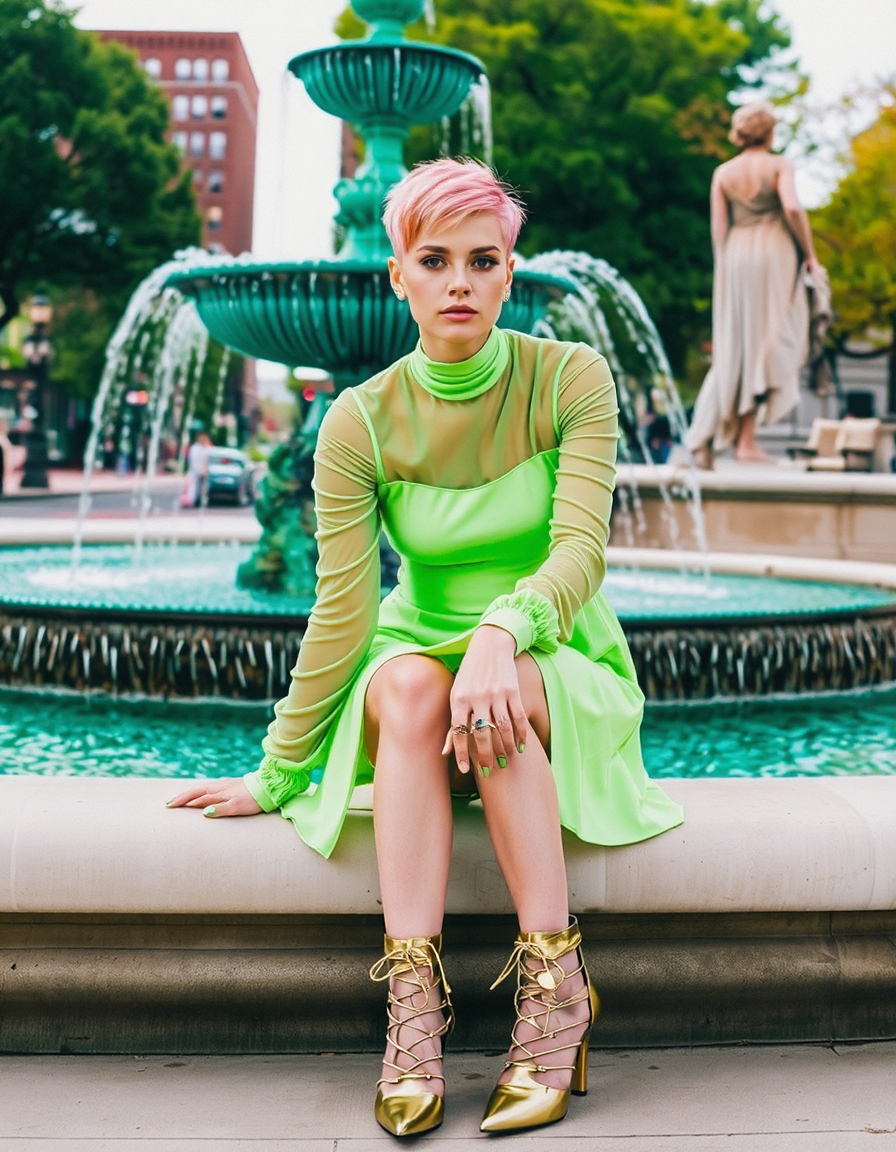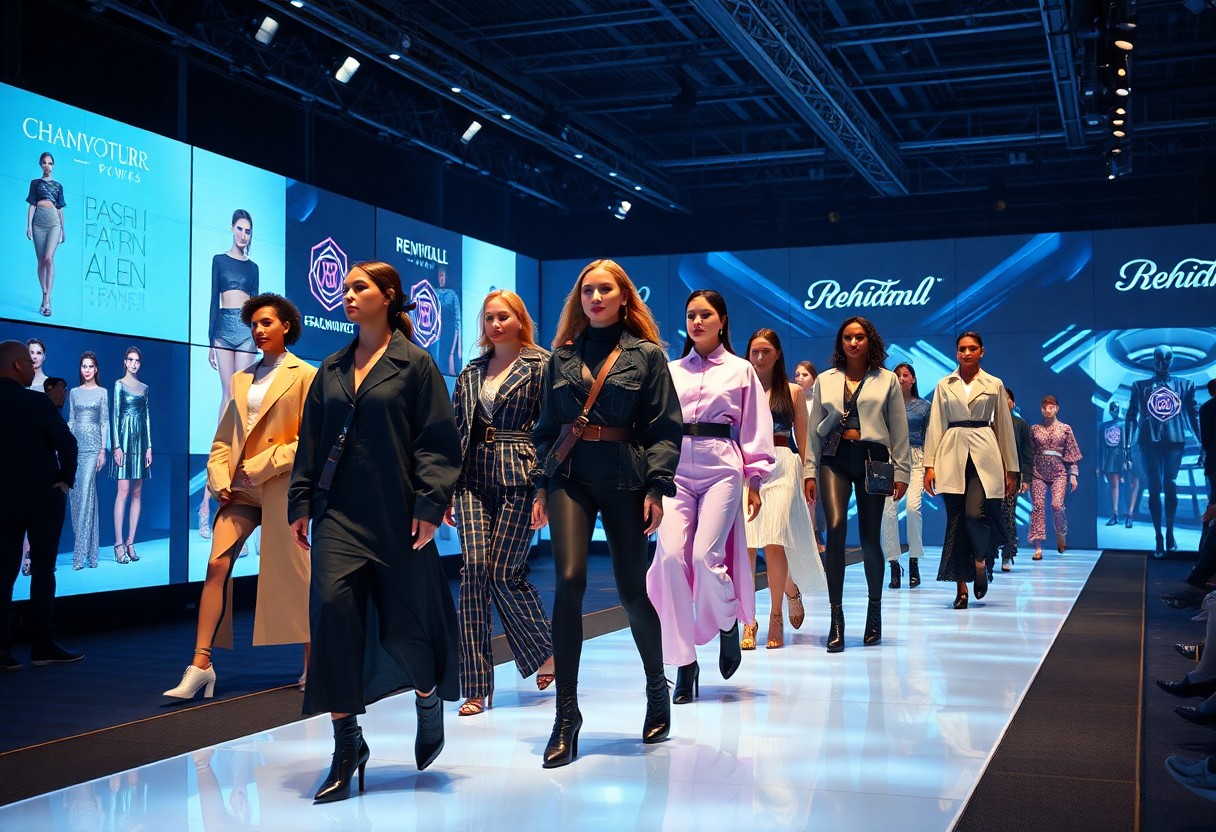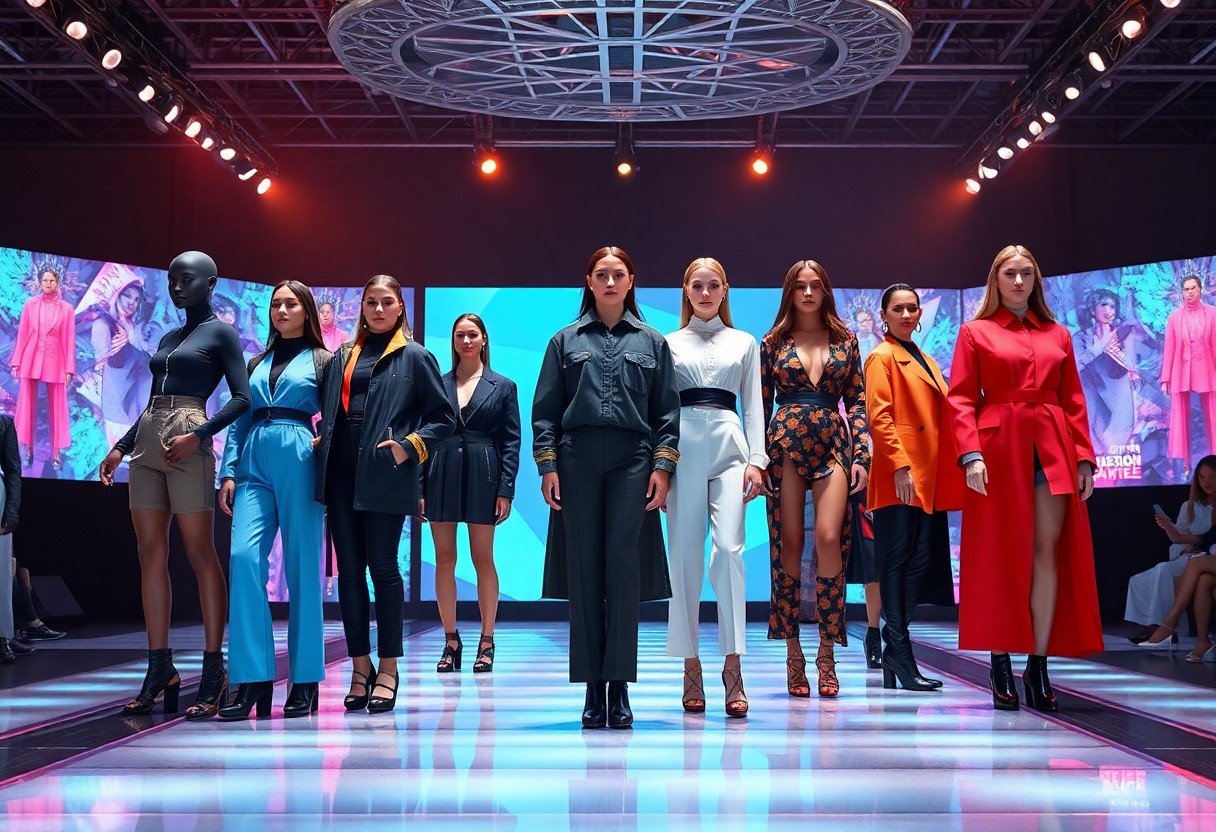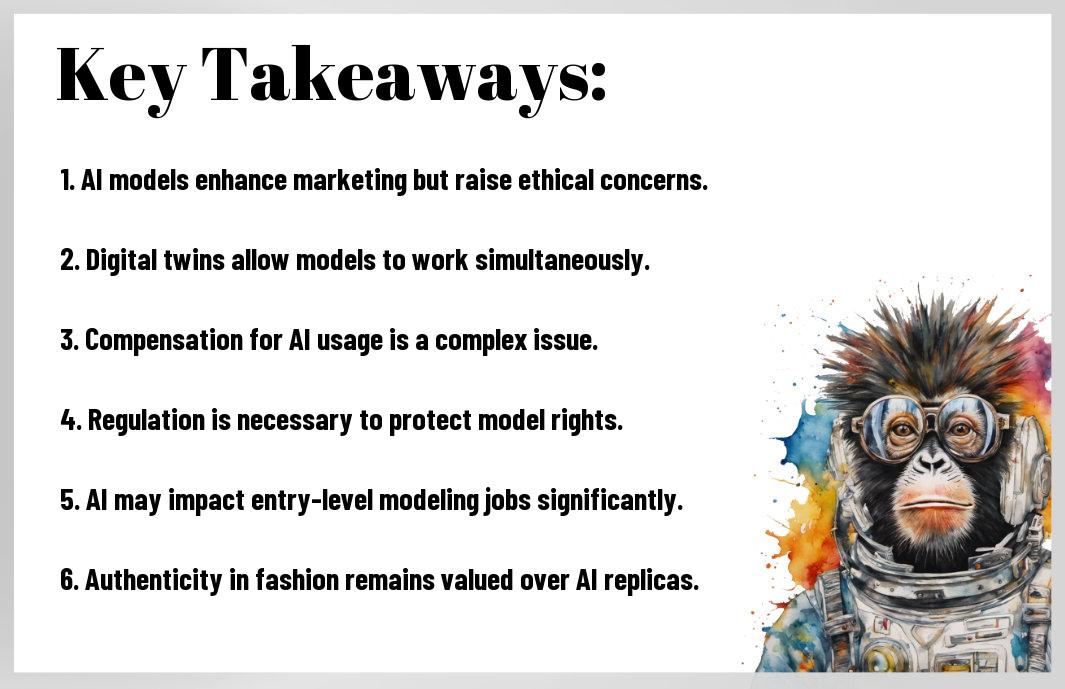30th Mar 2025
The Rise of AI Fashion Models: Redefining Beauty and Branding in the Digital Age

There’s no denying that artificial intelligence is transforming the fashion industry, as brands increasingly rely on AI-generated models to enhance their marketing strategies. With the ability to create lifelike digital twins, companies like H&M are shifting the dynamics of beauty representation and brand identity. As you navigate this changing landscape, it's imperative to understand both the potential benefits, such as increased diversity, and the risks involved, including the erosion of traditional modeling jobs. This blog aims to unpack the implications of this technological evolution for your brand and its messaging.
The Emergence of AI Fashion Models
To understand the shift in the modeling landscape, you need to explore the emergence of AI fashion models. These digital representations are created with the consent of real models, allowing brands like H&M to produce marketing content without the constraints of physical appearances or travel schedules. Brands see AI twins as a way to enhance their creative processes, providing a glimpse into a future where technology and modeling intertwine.
Overview of AI in the Fashion Industry
About the integration of AI into the fashion industry, major brands have begun adopting this technology to streamline their marketing efforts. H&M, for instance, plans to create AI twins of models, leveraging their likeness for promotions while ensuring that models are compensated for their digital representations. However, this development has raised significant concerns within the industry.
Benefits of AI Models for Brands
After analyzing the situation, it becomes clear that AI models offer brands innovative solutions in terms of efficiency and cost. Leading fashion companies, such as H&M, can produce content at a much lower cost while maintaining engaging visuals.
Models can also be utilized to achieve greater diversity and representation on brands’ websites, offering consumers a wider range of styles and looks. This shift not only allows you to see a greater variety of faces but also makes the production of marketing materials more cost-effective. With AI, brands can easily create a unique, tailored experience for their audience. However, this advancement raises questions about the impact on traditional modeling roles and the potential exploitation of real models, as they risk becoming less crucial in the evolving fashion landscape.

Ethical Considerations
While the rise of AI fashion models promises a revolution in marketing and representation, it also raises significant ethical concerns. You must navigate the complexities surrounding consent, compensation, and the implications for human creativity in an industry that thrives on personal connection and authenticity.
Exploitation and Consent Issues
With the introduction of AI models, you may question the ramifications for models who consent to have their likeness digitally replicated. The absence of robust regulations around compensation and rights can lead to potential exploitation, undermining the value and dignity of human creatives in favor of cost-cutting measures.
Impact on Human Models and Creatives
On one hand, the technology may augment your fashion experience, showcasing diversity and accessibility, but on the other, it threatens the livelihoods of many in the industry. Exploitation of AI technology can lead to reduced job opportunities, particularly for entry-level models, exacerbating a trend of economic insecurity you may already have witnessed. As 54% of industry workers share concerns about AI negatively affecting fashion, it’s imperative to recognize how such advancements can further erode human roles. While the allure of tech and cost savings is enticing, the personal touch that human models provide is irreplaceable, and safeguarding that remains important in your creative and consumer choices.

Consumer Perception
Clearly, the fashion industry's shift towards AI models is prompting diverse reactions from consumers. As brands like H&M experiment with AI "twins," your perception of beauty and authenticity is inevitably influenced. While some celebrate the technological advancements and potential for diversity, others worry about the implications for real models and the essence of fashion itself. In this evolving landscape, understanding consumer sentiment is vital for brands aiming to maintain relevance and connection.
Acceptance of AI Models in Fashion
Between the thrill of innovation and the fear of job displacement, your acceptance of AI models will vary based on personal beliefs and experiences. While the technology promises cost-efficiency and inclusivity, it raises questions about the future of real models, amplifying concerns that 54% of industry workers believe AI could negatively impact employment in fashion.
The Role of Authenticity in Branding
Behind the allure of AI models lies a complex relationship with authenticity. Consumers like you increasingly seek brands that resonate with genuine values, which can complicate the integration of AI imagery. Despite AI's capability to capture lifelike representations, the emotional connection with a human model is difficult to replicate. Your trust in brands may hinge on their approach to authenticity, as it plays a significant role in retaining loyal customers. Moreover, the ability of AI to drive marketing efficiency can inadvertently undermine the narrative of human artistry, leading to a perceived lack of sincerity. Thus, brands must tread carefully as they navigate this digital frontier.
Future Trends in AI Fashion
After witnessing the rapid emergence of AI models in the fashion industry, you can expect transformative changes in branding strategies and consumer engagement. As brands adopt these digital twins, the aesthetic and ethical standards of beauty will continually redefine, paving the way for new marketing paradigms.
Technological Advancements
Around the globe, innovative technologies are making AI fashion models increasingly sophisticated. With advancements in image processing and machine learning, these digital representations are becoming remarkably lifelike, enabling brands like H&M to create personalized marketing content that resonates with your desired aesthetics.
Evolving Business Models
Alongside technological developments, the fashion industry is adapting its business models to incorporate AI effectively. Brands are exploring avenues to produce more content at a significantly reduced cost, potentially changing the landscape of fashion employment.
But as you navigate these evolving business models, be aware of their implications. While AI can lead to cost-saving strategies, there’s a risk of decreasing opportunities for traditional models, especially at entry-level positions. Compensation structures for d digital twins are still unclear, raising concerns about whether models will receive fair pay for their likeness. This shift could benefit major brands financially but may further marginalize many creative professionals in an industry already grappling with job losses.

Case Studies
Keep in mind the fascinating developments in AI fashion modeling as you explore these case studies that showcase the technology's impact:
- H&M: Using AI "twins" of 30 models to enhance marketing, with models able to book and earn when their likeness is used.
- Levis: Experimented with AI models to streamline their marketing processes and decrease costs associated with human models.
- Lalaland AI: Provides AI models for brands like Zalando, highlighting increased diversity in casting while cutting production costs.
- Model Alliance: Advocating for models' rights and fair compensation in light of AI use in the industry.
Successful Implementations of AI Models
Implementations of AI models have shown promising outcomes for brands looking to innovate. Companies like H&M and Levis have adopted AI "twins" and virtual models, respectively, significantly reducing production costs while maintaining visual appeal and brand identity. These initiatives enable brands to broaden their reach and engage consumers more effectively through dynamic content.
Lessons Learned from Industry Leaders
Learned from the experiences of industry leaders, it is clear that navigating AI's integration into fashion requires caution. Brands recognize the potential benefits of cost-saving technology but must consider the impact on human jobs and creativity. Initiatives like H&M's raise important questions about ethical practices and fair compensation as the industry shifts.
Indeed, the rise of AI in fashion demands that you assess both opportunities and risks. The challenges, such as the potential erosion of human jobs and the complex landscape of compensation, cannot be overlooked. Leaders like Sara Ziff advocate for model rights, emphasizing that your voice matters in shaping a future that balances innovation with ethical standards. By drawing lessons from early adopters, you can better appreciate the need for regulation and thoughtful implementation in AI fashion models.
Regulatory Landscape
Unlike traditional modeling, the rise of AI fashion models introduces a complex regulatory landscape. As brands like H&M experiment with AI twins, the need for legislation that addresses consent, compensation, and ethical usage is becoming increasingly apparent. These regulations should ensure that creators and models alike are protected in this evolving digital space.
Current Legislation Affecting AI in Fashion
Before brands utilize AI models, current legislation mandates consent for the use of a model's likeness, particularly in states where laws like the Fashion Workers’ Act are in place. This act aims to secure fair compensation and uphold the rights of models as technology changes how they are represented in the industry.
Future Regulatory Challenges
Across the fashion industry, emerging AI technologies will bring forth significant regulatory challenges. As you navigate this new terrain, be aware that current laws may struggle to keep pace with the rapid advancements in AI. There is a potential for exploitation, as models may find their images used to train systems without proper compensation. Additionally, the focus on diversity could risk being oversimplified, leading to more significant issues related to representation. Without stringent regulations, you might see fewer job opportunities for entry-level models, further undermining human creativity in fashion.
This heightened risk underscores the necessity for a comprehensive framework that protects both the interests of human models and the sensitivities around AI representation. As brands integrate more AI into their marketing strategies, the likelihood of unethical practices increases, leaving models vulnerable to misuse of their likeness. Furthermore, it poses a challenge for regulators to establish a balanced approach, ensuring that innovation does not undermine the integrity of the fashion industry. Staying informed on these regulatory shifts will be vital as you engage with AI in fashion.

Conclusion
Drawing together the transformative impact of AI fashion models, you can see how they are redefining notions of beauty and branding in the digital age. As brands integrate these digital twins into their marketing strategies, it is crucial for you to consider the implications for human models and the industry as a whole. The ongoing dialogue about ethics, consent, and compensation will inform how this technology evolves, ultimately shaping your perceptions of fashion and the creative processes behind it.
